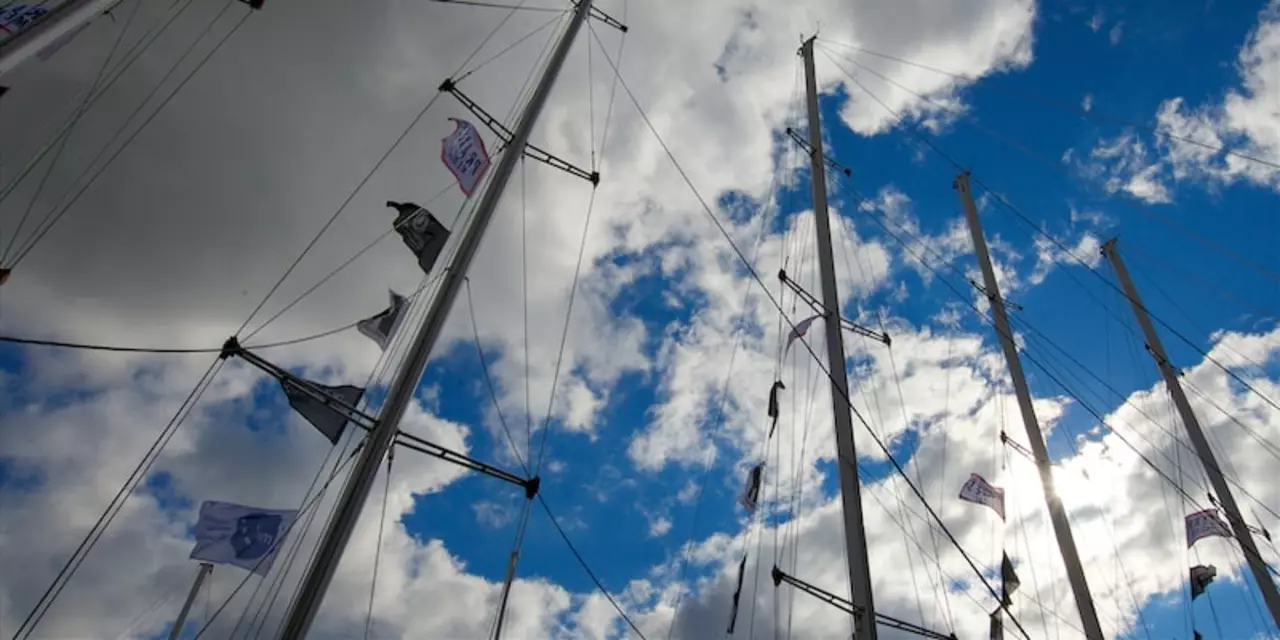Sailing Tag – Your Go‑To Spot for Practical Sailing Content
Welcome to the sailing tag on Sailing WaterSport Weekly. Here you’ll find short, useful pieces that answer the questions you actually have when you’re out on the water. Whether you’re hunting for a seaworthy boat, figuring out how long a yacht can stay under sail, or looking for the cheapest place to buy a sailboat, we’ve got you covered.
Choosing the Right Sailing Boat
First off, a seaworthy sailing boat is more than just a pretty hull. It needs a strong hull shape, sturdy construction, and reliable navigation gear. Look for boats built with marine‑grade fiberglass or wood‑core composites if you plan to face rough seas. Modern designs often include a deep keel and a well‑balanced sail plan that keep the boat stable when the wind picks up.
Budget matters too. The cheapest places to buy a sailboat are often in the United States, where a huge used‑boat market drives prices down. Check local boat shows, online classifieds, and auctions. Mexico and Caribbean nations also have affordable options, especially if you’re willing to take a boat that needs a little TLC.
Keeping Your Sailing Yacht Ready
How long can a sailing yacht go under sail? In the right hands, a well‑maintained yacht can stay under wind power for months. The limiting factors are crew fatigue, sail wear, and supplies. Regularly inspect rigging, replace worn sails, and keep your water and food stores topped up. A solid maintenance routine lets you push farther without worrying about breakdowns.
Don’t forget the small details that keep the yacht safe. A reliable communication system, updated charts, and a functional autopilot can make long passages much smoother. When the crew rotates watches and shares tasks, morale stays high and the yacht runs like a well‑oiled machine.
If you’re new to sailing clubs, you’ll notice a special flag fluttering at the dock. That’s called a burgee – the yacht club’s unique emblem. It’s not just decoration; it signals belonging and helps you spot fellow club members on busy marinas.
Beyond the basics, our tag also features deeper dives into topics like sail trimming, weather forecasting, and coastal navigation. Each article is written in plain English, so you don’t need a degree in naval architecture to understand it.
We update the sailing tag regularly, pulling the latest insights from our writers and community members. When you return, you’ll find fresh advice on everything from reefing techniques to the best apps for tracking wind conditions.
Got a specific question that isn’t covered? Drop a comment on any article and our editors will try to answer it in a future post. Sailing is a hands‑on hobby, and we love hearing about real‑world experiences that can help others.
So the next time you’re planning a trip or just daydreaming about the next gust of wind, bookmark the sailing tag. It’s your quick‑access hub for trustworthy, practical sailing info that keeps you moving forward on the water.
How fast can yachts go?
Hey folks, today we're chatting about the thrilling subject of yacht speeds - hold on to your captain's hat! Now, you might think these luxurious beasts are just for sipping champagne, but let me tell you, some can really zip across the waves! On average, yachts can cruise along at a comfy 15 to 20 knots, but some power-packed models can hit a breathtaking 35 knots! That's faster than a startled seagull! So, whether you're racing the sunset or just trying to outrun Monday, remember, yachts aren't just pretty faces - they've got some serious pep in their step!
View moreWhat are the joys of sailing?
Sailing is an exciting and rewarding experience that can be enjoyed by all ages. It can give a sense of freedom and adventure, as well as a chance to relax and connect with nature. It can also be a great way to bond with friends and family, and to explore new places. Additionally, sailing can provide an opportunity to learn and grow, as it involves mastering a range of skills such as navigation, maintenance, and safety. Finally, there's the joy of being able to take in the amazing views and the calming sound of the water, the wind, and the waves.
View moreWhat are some good sea shanties?
Sea shanties are traditional songs that were sung by sailors in the past. They were used to accompany hard labor, such as raising sails and pulling ropes, and to pass time during long voyages. The melodies are usually simple and repetitive and often have a call-and-response structure. Some popular examples of sea shanties include "Drunken Sailor", "Rolling Home to Old New England", and "Leave Her Johnny". They can be a great way to make a boring task more enjoyable, and are also a way to connect with the history of sailing.
View moreWhat are some things about oceans that only sailors know?
Oceans are vast and mysterious bodies of water with a wide range of secrets and knowledge that only sailors know. From the basics of how to navigate and read the sea, to more subtle details about the marine environment and the creatures that inhabit it, sailors have a unique understanding of the ocean. They know how to read the weather, the tides and the currents, and how to stay safe in the face of danger. They also know how to identify different species of marine life and how to interact with them. With all these skills, sailors are some of the few who truly understand the power and beauty of the ocean.
View moreHow hard is sailing around the world on a catamaran?
Sailing around the world on a catamaran is a great way to explore the world, but it is not without its difficulties. The journey requires a special type of boat that can handle the rougher seas, and the navigator must be experienced in sailing and navigation. The journey also requires a great deal of preparation and planning to ensure that vital supplies and provisions are on board. Additionally, catamarans are more susceptible to damage from storms, so a skilled navigator is essential for a safe journey. All in all, sailing around the world on a catamaran is a challenging but rewarding adventure.
View more



